Canada has a rigid meat inspection system to ensure that commercially sold food is safe for public consumption. A key component of this system is to prevent unhealthy animals from being sold for food. There is an entire system of slaughter facility inspection and food safety protocols that I won’t have space to touch on […] Read more
Tag Archives animal health — page 16
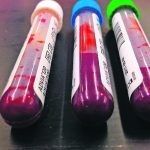
Bleeding issues arise from variety of disease conditions
All bleeding eventually stops. However, the rate at which blood clots is critical to animal health. Generally, most cells in the body are no further than one millimetre from a blood vessel. This proximity allows the spread of oxygen and nutrients to cells and removal of carbon dioxide and other waste products. The heart pumps […] Read more

Take advantage of spring shedding to assess horse health
Spring has arrived on the Prairies and that means our horses are shedding their puffy winter coats in favour of their short, sleek summer look. With less hair on their bodies, it is a good idea to take a few minutes to assess visual health indicators. Spring is an important time to determine your horse’s […] Read more
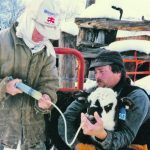
Ulcers’ sporadic nature can present challenges
An interruption of blood supply to the stomach lining in calves is a common cause, but there are other factors as well
What causes ulcers in young calves? Dr. Murray Jelinski of the Western College of Veterinary Medicine says the four stomachs in young calves, particularly the rumen, don’t fully function until they are more developed. Calves depend on the abomasum to digest milk in the first weeks of life. “Just as in the human stomach, the […] Read more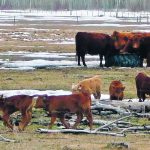
Play may be important part of animal welfare
We’ve all seen exuberant play behaviours in various animal species. Puppies roughhousing, fighting, gnawing and gnashing their teeth. Dogs bowing to initiate play. Kid goats leaping off structures and butting heads. Kittens chasing anything that moves. Foals bucking, nipping and kicking at their herd mates. You get the idea. There is growing recognition of the […] Read more
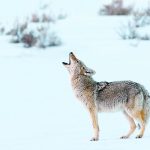
Coyotes seen as possible source of mange for farm dogs
Coyotes are ubiquitous on the Canadian prairie landscape. In rural and urban areas, coyote populations are thriving. A disease frequently associated with coyotes is mange, one of the most visible and severe diseases to affect wild animals. A survey of coyotes in British Columbia found that about one in four had skin disease consistent with […] Read more
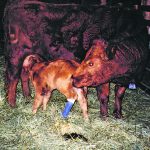
Prognosis looks good for broken legs in young calves
Fractured legs are relatively common in young or newborn calves, mostly due to accidental stepping by cows. Dr. Andy Acton of Deep South Animal Clinic at Ogema, Sask., says age of the calf, whether it’s a front or back leg, and location of the fracture determine how easily it can be immobilized for healing. Broken […] Read more

White-tailed deer potential reservoir for COVID-19 virus
At the start of the COVID-19 pandemic, there were many unknowns. Where did the virus come from? What are the main disease manifestations? Certainly, many public health experts and veterinarians were also wondering: will it infect animals? Within a few months, we had some answers, including insight into the animal situation. The virus can infect […] Read more

Measures can be taken to prevent mercury poisoning
We’ve come a long way from the days of “mad hatters.” Historically, hat makers, who used mercury in the process of turning the pelts of beaver and other fur-bearing animals (many of which originated in Canada) into luxury top hats, suffered from severe, debilitating neurological disease. Nowadays, the most common ways that people encounter mercury […] Read more
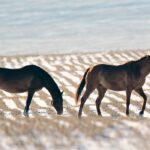
Skin tumour removal in horses can be tricky business
A lump or bump on your horse’s skin is most likely a sarcoid. These are the most common type of skin tumours found in horses and other equids like donkeys and mules. Some studies have estimated that up to 12 percent of horses will develop sarcoids in their lifetime. Their appearance can range from rough, […] Read more






